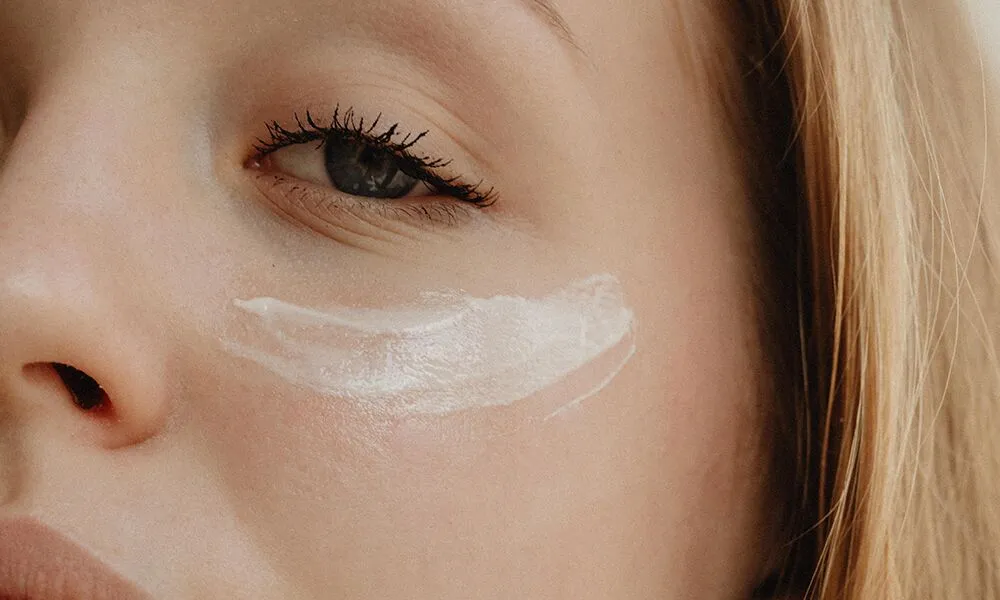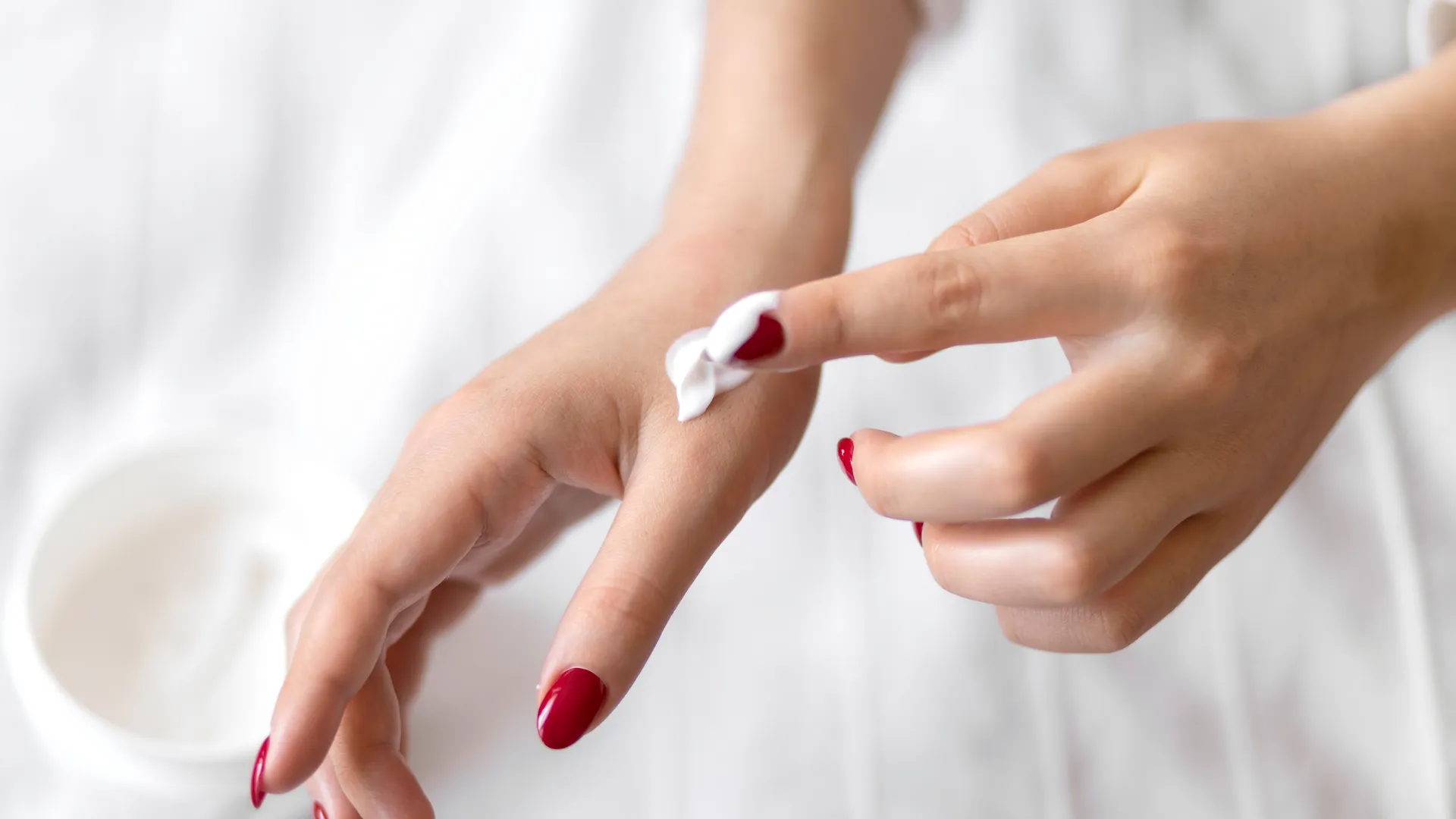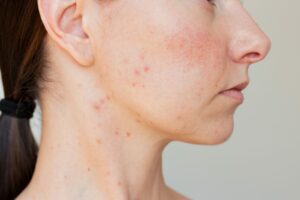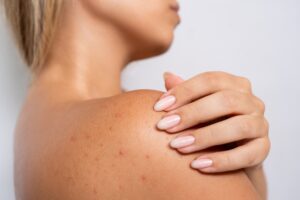As the body’s largest organ, our skin is constantly exposed to internal and external forces that contribute to aging. We talk about them medically as intrinsic and extrinsic aggressors – sounds fierce, but they can do some damage!
When we think of the external “enemy” of skin, we think about ultraviolet radiation (UVR) from the sun, namely UVA and UVB. Newer data shows that wavelengths beyond UVA and UVB also play a role in aging the skin, including visible light, near infrared light, and even excessive heat and ozone pollution. Other factors that can also lead to accelerated aging include what we eat, excessive alcohol, tobacco, and stress.
Free Radicals and the Downward Spiral of Damage
Without getting too detailed, free radicals are molecules with one or more unpaired electrons. Electrons need to be paired for stability. When they’re not, their molecules run around (so to speak) looking for another molecule to steal an electron from. When the “victimized” molecule loses its electron, it then becomes a new free radical and the downward spiral of damage continues to cascade! These free radicals destroy structures in the skin, such as collagen, elastin, and DNA.
Historically, with our narrow thinking that sun (UVR) is the only force damaging our skin, we put all the emphasis on sunscreen. But with our newer understanding of these additional aggressors, it’s clear that sunscreen is not enough. This is where topical antioxidants (AOX) come to the rescue!
Topical Neutralizers to the Rescue
AOX donate their own electrons to the free radicals, which neutralizes them and puts an end to the downward spiral. 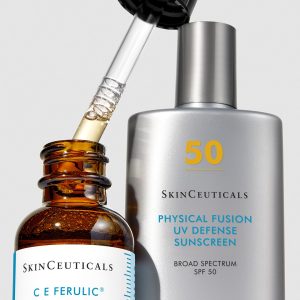 And unlike other molecules, AOX molecules are non-reactive, even when they have an unpaired electron (cutting off the cascade, because they don’t “run around” looking for other molecules). A diet rich in AOX foods (think plants!) is beneficial on many levels and the right formulation of topical AOX have been shown to protect the skin from that free radical damage.
And unlike other molecules, AOX molecules are non-reactive, even when they have an unpaired electron (cutting off the cascade, because they don’t “run around” looking for other molecules). A diet rich in AOX foods (think plants!) is beneficial on many levels and the right formulation of topical AOX have been shown to protect the skin from that free radical damage.
“Since many external aggressors beyond UVR are constantly bombarding our skin,” says Dr. Karynne Duncan from Duncan Dermatology in St. Helena, “we need to choose more than just sunscreen to protect our skin’s health.”
Basic UVR Protection: Sun Barriers
We know the basics for sun protection. (Doing them on a regular basis is another story!)
To avoid sun damage from both UVA (remember A for aging) and UVB (B for burning):
- Stay in the shade
- Wear sun-protective clothing like hats and long-sleeved shirts
- Apply broad spectrum sunscreen (SPF 30 or higher) daily and every two hours when outdoors
- Avoid being out when the sun’s rays are strongest (typically mid-morning to mid-afternoon)
- Wear sunscreen daily, even on cloudy/rainy days
Adding AOX to Your Skin Protection Portfolio
The addition of a topical AOX to your daily sunscreen use will combat damage from the sun as well as the other aggressors. Some of the main topical AOX include vitamin C, vitamin E, phloretin, and ferulic acid. These AOX have been shown to increase collagen production, improve skin firmness and wrinkles, and brighten the complexion.
But not all topical AOX are created equal! The ingredients and the proportion of them, plus the packaging, all make a difference in effectiveness. Ask your dermatologist to recommend a high-quality topical AOX that’s right for your skin. What works well for one person may not work as well for someone else.
Tips for Best Results
To maximize healthy, youthful skin:
- Ask your dermatologist to recommend a high-quality topical AOX that is right for your skin
- Apply a topical AOX + broad-spectrum sunscreen every morning
- The order of application should be topical AOX, then moisturizer, and finally sunscreen
- Eat a healthy diet, rich in natural antioxidants (plants!)
- Minimize exposures to known extrinsic aggressors that age your skin (e.g., tobacco, excessive alcohol, stress, excessive heat, pollution)

